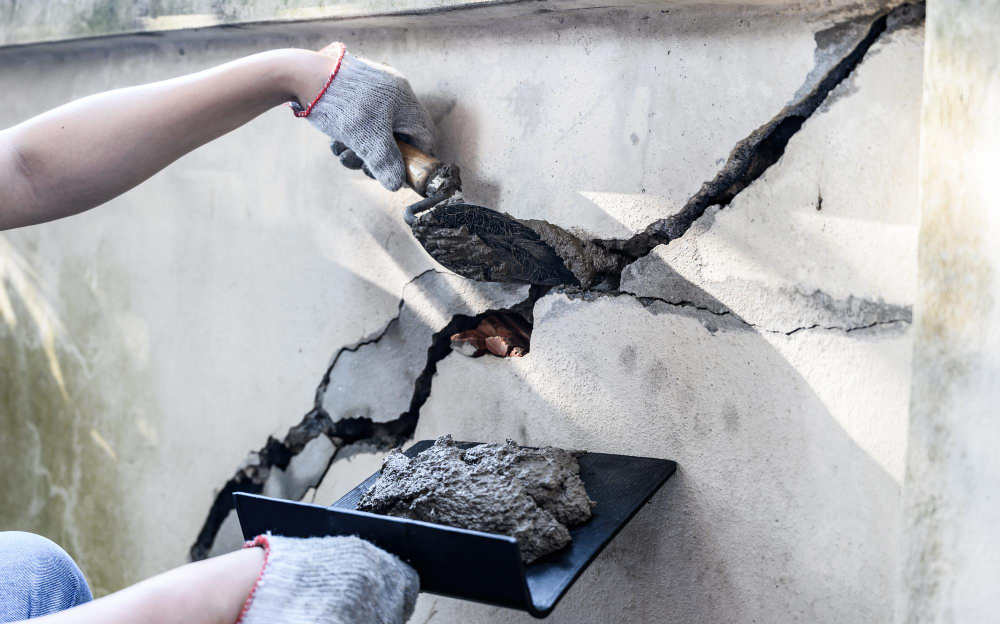Concrete is one of the most durable building materials, but over time, even the best structures can develop cracks due to environmental conditions, structural stress, or poor construction techniques. Repairing these cracks is crucial to maintain the structural integrity and longevity of buildings, bridges, and other infrastructure. Here, we explore the top concrete repair methods for addressing cracked structures, helping you choose the right approach for your project.
1. Epoxy Injection
Epoxy injection is one of the most effective methods for repairing small cracks in concrete. This technique involves injecting a high-strength epoxy resin into the cracks to bond the concrete back together. Epoxy injection restores the structural integrity of the concrete and prevents the cracks from widening or causing further damage. It is particularly useful for cracks that are less than 0.25 inches wide and for structures that need to bear heavy loads, such as bridges and industrial floors. However, this method is not suitable for cracks caused by ongoing structural movements or water infiltration.
2. Polyurethane Injection
Polyurethane injection is a flexible and waterproof repair solution, ideal for cracks caused by water infiltration. Unlike epoxy, polyurethane foams expand when injected, filling cracks and sealing them from moisture. This makes it particularly useful for basements, tunnels, and retaining walls where water leakage is a concern. While polyurethane provides excellent waterproofing, it does not restore the structural integrity of the concrete in the same way epoxy does, making it more suitable for non-structural repairs.
3. Routing and Sealing
Routing and sealing is a simple but effective method for repairing surface-level cracks. This process involves enlarging the crack along its surface to create a uniform groove, which is then filled with a flexible sealant. The sealant prevents water, debris, and chemicals from entering the crack and causing further deterioration. This method is ideal for minor, non-structural cracks in concrete slabs, driveways, and walkways. While it does not restore the structural strength of the concrete, it helps protect the surface from further damage.
4. Stitching
Stitching is a method used to repair larger or more severe cracks in concrete. It involves drilling holes on both sides of the crack and inserting metal “staples” or “stitches” across the crack. These metal staples hold the concrete together and prevent the crack from expanding. Once the staples are in place, the crack can be filled with epoxy or other materials to seal the surface. Stitching is a reliable solution for cracks that may be subject to continued stress or movement, providing long-term stability to the structure.
5. Concrete Resurfacing
For large areas of cracked or damaged concrete, resurfacing is often the best solution. Concrete resurfacing involves applying a new layer of concrete or overlay to the existing surface, covering the cracks and restoring the appearance and functionality of the structure. This method is commonly used for driveways, patios, and other large slabs. It improves both the aesthetics and durability of the concrete, while also extending its lifespan. However, resurfacing is most effective when the underlying cracks are not caused by ongoing structural issues.
6. Crack Bridging with Fiber-Reinforced Polymers (FRP)
Fiber-reinforced polymers (FRP) are an advanced material used for strengthening and repairing concrete structures. FRP sheets or strips are applied over the cracked areas to bridge the cracks and provide additional reinforcement. This method is particularly effective for structures that need to bear high loads, such as bridges and columns. The lightweight nature and high strength of FRP make it an excellent choice for both crack repair and structural strengthening, ensuring that the structure can withstand future stresses.
Conclusion
Choosing the right concrete repair method depends on the type of crack, the cause of the damage, and the function of the structure. While methods like epoxy and polyurethane injection are ideal for minor cracks, more severe or structural cracks may require stitching or the use of fiber-reinforced polymers. At CMTC, we specialize in providing comprehensive concrete repair solutions tailored to the needs of your project, ensuring long-lasting performance and durability.




